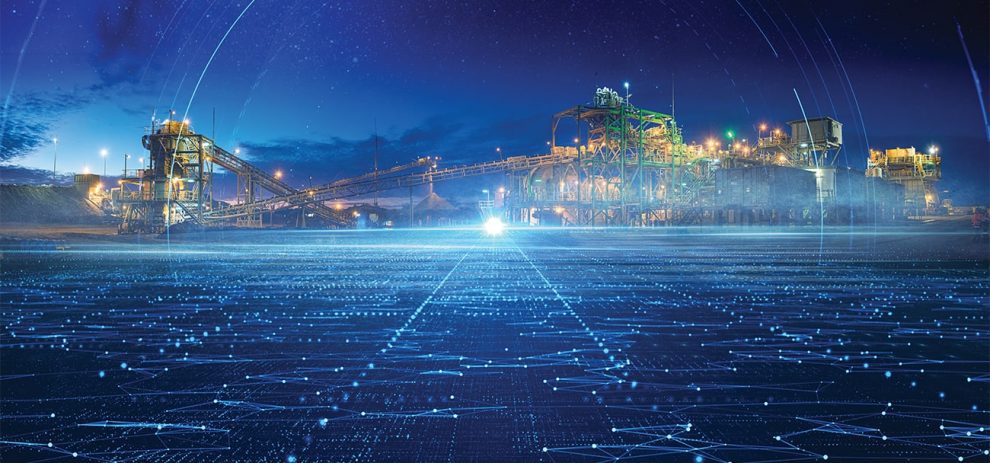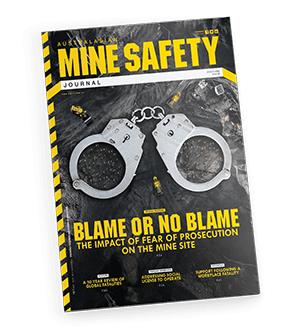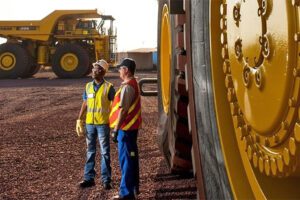A new range of connected wearable technologies may be already improving safety across the mining industry.
Serious workplace injuries and illnesses cost the Australian economy an estimated $61.8 billion per year.
The average cost of injury and disease among the Australian trades sector amounted to $123K and Plant and machinery operators around $124K.
Body stressing and Fall, trips and slips result in significant costs per injury. Typically in order of >$100K per case.
While compliance with legislation and standards and development of an organisational culture that emphasises safety are important elements of injury reduction. More and more companies are using technology devices to assist in identifying conditions that may result in injuries and illnesses before they exist.
Network-connected wearable, sensors and tags are starting to make workers safer, and more safety innovations are in the pipeline. Beyond preventing accidents in the moment, IIoT analytics can help identify areas that need safety overhauls for better long-term worker protection. Here’s how the IIoT is improving safety in each of the major manufacturing injury categories.
PREVENT BODY STRESSING WITH REAL-TIME MONITORING
Body stressing is the most frequent serious injury in the Australian mining industry. Lifting, pulling, or pushing heavy objects is a frequent cause of claims. If the work takes place in hot environments, heat stress can make overexertion even more likely. Technology can help reduce these risks.
It’s now possible to monitor individual workers’ stress responses with an IoT-enabled wearable such as wristbands, vests and shirts. For example, Japanese textile company Mitsufuji produces shirts made of conductive fibre to monitor the wearer’s heart and respiration rates, as well as the ambient temperature and humidity. The shirt’s transmitter sends data to the cloud for analysis. It can also alert supervisors when worker’s readings fall outside the safe range.
Real-time temperature and humidity sensors can also let workers and managers know when it’s unsafe to do physically intense tasks in an area, and identify times or days when it’s safer to work in those spaces.
A new and promising approach to cutting exertion injuries is the addition of IIoT capabilities to exoskeletons. Manufacturers like Ford have started adopting mechanical exoskeletons for their line workers, to assist with lifting heavy objects and managing repetitive tasks.
German Bionic has developed the Cray X exoskeleton. It is a human-machine system that combines human intelligence with machine power, by supporting and strengthening the wearer’s movements, thereby reducing the risk of workplace accidents and load-bearing injuries.
German Bionic Cray X has been specially designed for people manually handling goods and tools, to reduce compression pressure in the lower back area.
The exoskeletons connect with both enterprise systems and individuals that help monitor a range of factors including KPIs. The connection also facilitates an intelligent bilateral information loop between the exoskeleton and the user, enabling exoskeletons to learn and improve, and become continuously smarter.
The exoskeletons collect and report data that companies can use to improve working conditions and pinpoint the causes of injury, while also supporting workers avoid back injuries.
GETTING HELP FOR FALLS FASTER
Falls on the same level (as opposed to falls from ladders and other equipment) are a common cause of serious injury in Australian businesses. Right now, IIoT wearables that include accelerometers and gyroscopes can detect worker falls in real time and alert supervisors for faster emergency response.
The Blackline Safety suite of Loner working alone devices are equipped with True Fall Detection technology. Each device can automatically detect the signature movements of a fall in contrast to other activities—such as walking down stairs or jumping off the tailgate of a truck.
The technology uses advanced micro-electromechanical sensors to continuously monitor an employee’s motion. It can be optionally enabled within an alert profile with Blackline’s Loner Portal cloud-hosted user account. It is also adjustable for sensitivity to suit different employee roles and activity levels.
“Network-connected wearable, sensors and tags are starting to make workers safer, and more safety innovations are in the pipeline.”
When an employee falls, there is a drop that is often coupled rotation. If a lone worker falls and does not get back up right away, the Loner device will trigger its audible, visual and tactile alarm that requests the employee to confirm his or her wellbeing by pressing the check-in button.
If the lone worker does not respond within a preset time, the Loner device communicates a safety alert in real time to monitoring personnel who can then manage the most efficient emergency response to the downed employee.
KEEPING WORKERS SAFE FROM COLLISIONS
A frequent cause of injury in many workplaces is collisions with objects, equipment, or vehicles, which accounts for a high proprtion of total injuries in the workplace.
Two ways IIoT technology can help are real-time location systems and proximity detection. Real-time location systems can monitor worker movement out of and into hazardous or restricted zones. These systems can alert workers when they walk into an unsafe area—for example, a space where heavy equipment is in use—and alert supervisors, too.
Proximity detection uses RFID tags on machinery and worker clothing to keep workers and moving equipment from colliding. For example, the IIoT-enabled Guard hat hardhat system warns workers and equipment operators when they’re getting too close, so they can change course before there’s an accident.
Companies like Behr Tech are combating challenges around workplace safety in industrial settings, BehrTech, Intel, Advantech, Microsoft & Hitachi Solutions have teamed up to deliver an end-to-end worker safety architecture from the edge to the cloud.
KEEPING WORKERS AWAY FROM HAZARDOUS EQUIPMENT
Another application for proximity detection is to keep people from getting caught in equipment or crushed by objects, which has been shown to be a significant . Combining proximity detection with real-time location detection can keep workers away from hazards and reduce entanglement risks even more. If there is an accident, biometric stress monitors and fall detection sensors can alert supervisors so they can summon help quickly.
Position Partners have a range of prximinity monitoring equipment that is Worn on the hard hat or sleeve of everyone entering the site to keep people safe in the construction, mining and industrial workplace. Blue Electronics Personal Proximity devices vibrate and sound an alarm if a person gets too close to a machine, no go zone or other defined hazard on site.
GUARDING AGAINST REPETITIVE STRESS INJURIES
Repetitive motion injuries round out the top five in manufacturing. Posture monitors can reduce this kind of injury by alerting workers if they’re moving in ways that put them at risk. Feedback based on device readings shows workers how to move more safely and it gives them a dashboard where they can track their progress in changing their behaviour.
Companies like Xsens, a leading innovator in 3D motion tracking technology, has bulit sensor fusion technologies that enable a seamless interaction between the physical and the digital world. These device can track a range of movements and allow
Vibration sensors can help workers who handle pneumatic equipment to avoid potentially disabling hand-arm vibration syndrome. These sensors can collect exposure data for individual employees and send alerts when out-of-range vibration readings are detected.
In all these injury-prevention scenarios, the data collected by the IIoT system can be analysed to make mines safer.
Examples include an employee’s history of repetitive movement or hand-arm vibration exposure can help supervisors know when it’s time for breaks or assignment to different tasks.
Analysing proximity and real-time location datasets can reveal physical locations, times of day, or specific processes that have a higher risk of collisions, falls or entanglement of workers and equipment.
Based on these range of capabilities, we can be assured that sensor IIoT technology can reduce injury risks right now and has the potential to make mines safer overall in the years to come.















Add Comment